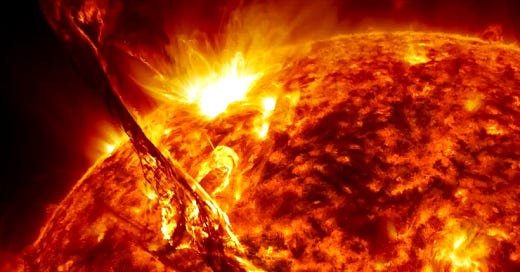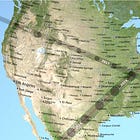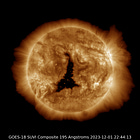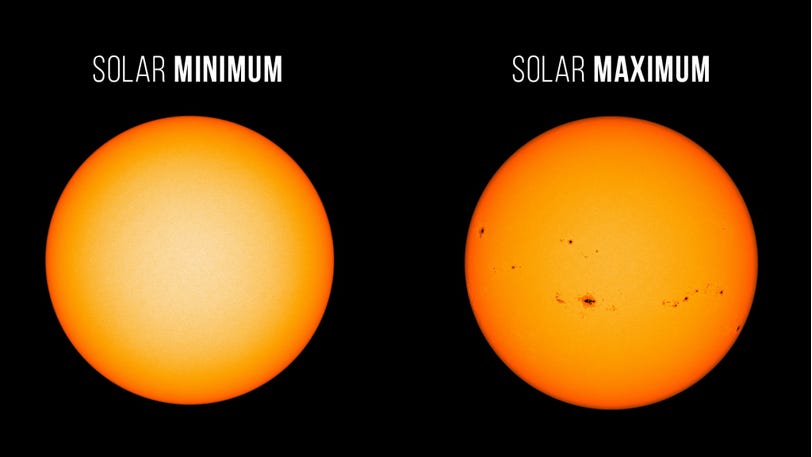Sun Reaches Maximum Phase in 11-Year Solar Cycle After Numerous Strong Flares, Solar Ejections
NASA, the NOAA: “During solar maximum, the number of sunspots, and therefore, the amount of solar activity, increases".
SPACE - NASA, the NOAA, and the Solar Cycle Prediction Panel have announced that the sun has reached its solar maximum period after a week of numerous strong solar flares and coronal mass ejections from the Sun.
According to an article by NASA and the National Oceanic and Atmospheric Administration (NOAA), the Sun has reached its Maximum Phase in its 11-year Solar Cycle.
NASA/NOAA: "The solar cycle is a natural cycle the Sun goes through as it transitions between low and high magnetic activity."
"Roughly every 11 years, at the height of the solar cycle, the Sun’s magnetic poles flip — on Earth, that’d be like the North and South poles swapping places every decade — and the Sun transitions from being calm to an active and stormy state."
NASA: This week there were:
28 M-class flares
4 X-class flares (!)
31 coronal mass ejections
2 geomagnetic storms
The article went on to explain, “During solar maximum, the number of sunspots, and therefore, the amount of solar activity, increases".
"This increase in activity provides an exciting opportunity to learn about our closest star — but also causes real effects at Earth and throughout our solar system.”
"Solar activity strongly influences conditions in space known as space weather. This can affect satellites and astronauts in space, as well as communications and navigation systems — such as radio and GPS — and power grids on Earth.
When the Sun is most active, space weather events become more frequent. Solar activity has led to increased aurora visibility and impacts on satellites and infrastructure in recent months."
Full Article: Sun Reaches Maximum Phase in 11-Year Solar Cycle
Keep reading with a 7-day free trial
Subscribe to The Standeford Journal - News, Intel Analysis to keep reading this post and get 7 days of free access to the full post archives.








